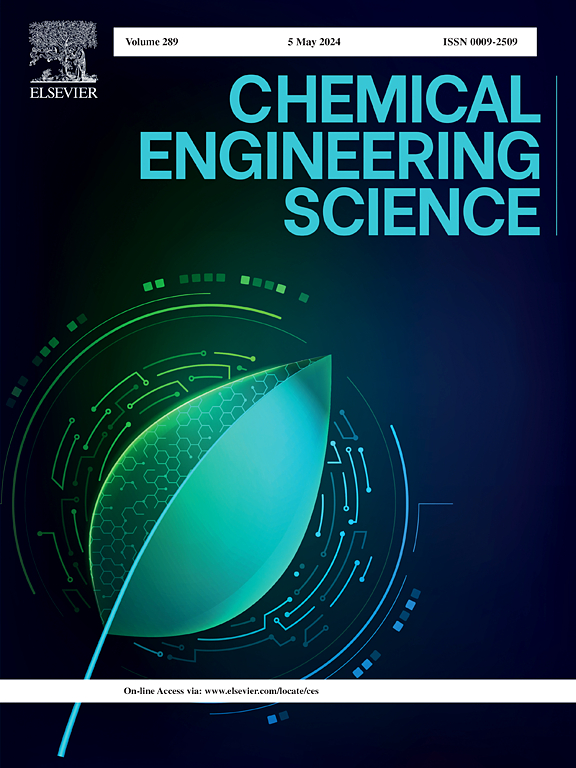聚苯乙烯-嵌段聚环氧乙烷共聚物溶液中溶剂介导的形态转变
IF 4.3
2区 工程技术
Q2 ENGINEERING, CHEMICAL
引用次数: 0
摘要
聚苯乙烯-嵌段聚环氧乙烷(PS-b-PEO)共聚物的自组装形态受溶剂选择的显著影响。各种形态的形成是由不同组分之间的热力学不相容驱动的。本研究采用亚稳粗粒模型研究了PS-b-PEO在N, N ' -二甲基甲酰胺(DMF)、二恶烷和水组成的混合溶剂中的聚集行为。模拟结果表明,随着嵌段共聚物(BCP)浓度的增加,嵌段共聚物(BCP)的形貌由球状胶束(S)相转变为柱状(C)相和层状(L)相。此外,发现不同的水含量会影响这些相态。例如,当BCP浓度为20%时,随着含水量的增加,BCP由C相转变为S相。数字密度统计表明,这种转变是由于水和疏水链段之间的热力学不相容性。此外,对不同链长BCP的仿真结果表明,该模型可以准确地预测链长较长的BCP的行为。我们的研究结果表明,通过调整嵌段共聚物的含水量和比例,可以实现多种形态的自组装材料,从而为未来的相关实验提供了有价值的指导。本文章由计算机程序翻译,如有差异,请以英文原文为准。


Solvent-mediated morphological transitions in polystyrene-block-poly (ethylene oxide) copolymer solutions
The self-assembly morphology of polystyrene-block-poly(ethylene oxide) (PS-b-PEO) copolymers is significantly influenced by the selected solvents. The formation of various morphologies is driven by thermodynamic incompatibilities among the different components. In this study, the aggregation behavior of PS-b-PEO in mixed solvents comprising N, N’-dimethylformamide (DMF), dioxane, and water is investigated using a metastable coarse-grained model. The simulation results indicate that the morphology of the block copolymer (BCP) transitions from a spherical micellar (S) phase to cylindrical (C) and lamellar (L) phases as the BCP concentration increases. Additionally, varying water content is found to influence these phase states. For instance, at a BCP concentration of 20%, the BCP transitions from the C phase to the S phase as the water content increases. The number density statistics suggest that this transition is due to the thermodynamic incompatibility between water and the hydrophobic chain segments. Furthermore, simulation results for BCP with varying chain lengths demonstrate that the model can accurately predict the behavior of BCP with longer chain lengths. Our findings highlight that self-assembled materials with diverse morphologies can be achieved by adjusting the water content and the ratio of block copolymers, thereby providing valuable guidance for future related experiments.
求助全文
通过发布文献求助,成功后即可免费获取论文全文。
去求助
来源期刊

Chemical Engineering Science
工程技术-工程:化工
CiteScore
7.50
自引率
8.50%
发文量
1025
审稿时长
50 days
期刊介绍:
Chemical engineering enables the transformation of natural resources and energy into useful products for society. It draws on and applies natural sciences, mathematics and economics, and has developed fundamental engineering science that underpins the discipline.
Chemical Engineering Science (CES) has been publishing papers on the fundamentals of chemical engineering since 1951. CES is the platform where the most significant advances in the discipline have ever since been published. Chemical Engineering Science has accompanied and sustained chemical engineering through its development into the vibrant and broad scientific discipline it is today.
 求助内容:
求助内容: 应助结果提醒方式:
应助结果提醒方式:


